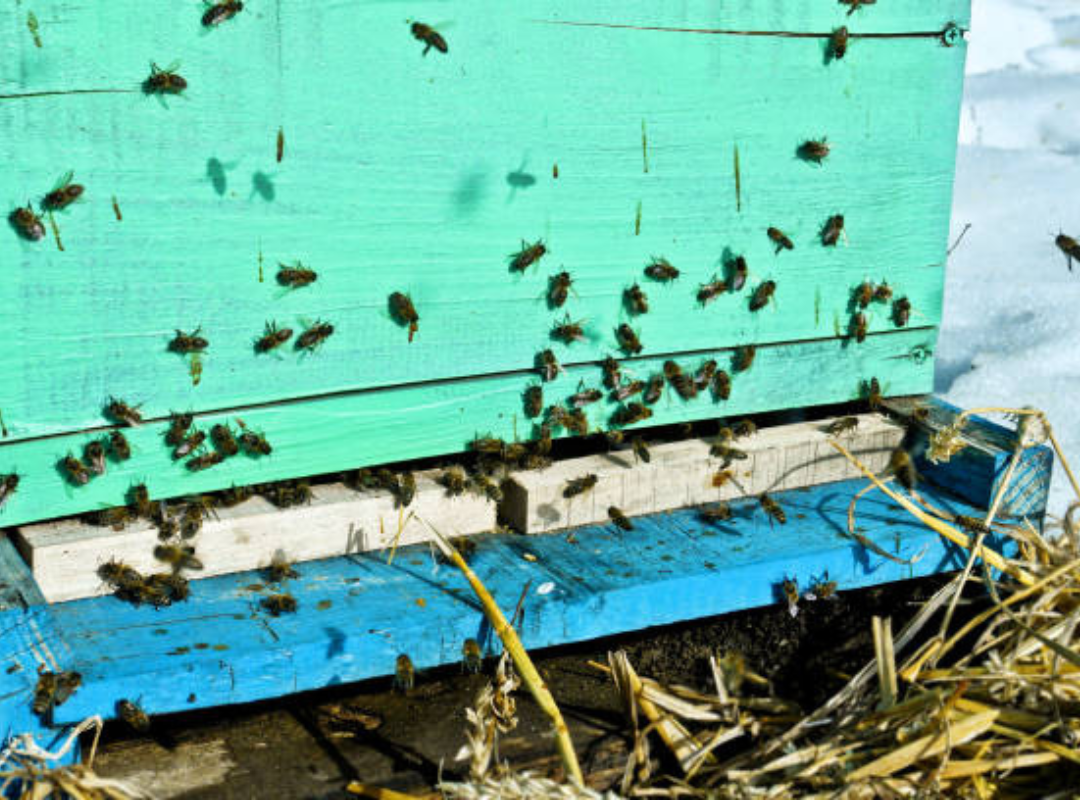Bees play a crucial role in pollination, contributing to biodiversity and agricultural success. However, their presence in residential areas, gardens, or patios can sometimes be a concern, especially for individuals with allergies or those who want to create a bee-free zone for safety reasons. Instead of using chemical repellents or harmful tactics, homeowners can rely on natural barriers to keep bees at a safe distance. These eco-friendly methods ensure that bees continue their essential work while preventing them from becoming a nuisance in unwanted areas.
Why Choose Natural Barriers Over Artificial Solutions?
Many people resort to pesticides or chemical-based deterrents to keep bees away. While these methods may offer temporary relief, they can have long-term environmental consequences, harming not only bees but also other beneficial insects, plants, and even pets. On the other hand, natural barriers provide a sustainable way to redirect bees without disrupting their role in the ecosystem.
Using plants, landscaping techniques, and strategic placement of objects, homeowners can create a bee-free zone without endangering these essential pollinators. This approach is both humane and practical, allowing coexistence rather than elimination.
Plants That Act as Natural Barriers
Certain plants naturally repel bees due to their strong scents or specific chemical properties. Incorporating these plants into your garden or outdoor space can help minimize bee activity in targeted areas.
Citronella and Lemongrass
Citronella is widely known for repelling mosquitoes, but it also works effectively against bees. The strong citrus scent interferes with their navigation and discourages them from lingering. Lemongrass, which contains citronella oil, serves the same purpose and is an excellent addition to patios or outdoor seating areas.
Marigolds
Marigolds release a pungent scent that bees generally avoid. These vibrant flowers are easy to grow and can be planted around entryways, walkways, or picnic spots to keep bees from gathering. Additionally, marigolds deter other pests like aphids and mosquitoes, making them a multifunctional choice for gardens.
Eucalyptus
Eucalyptus trees and plants produce a strong aroma that naturally repels bees. Planting eucalyptus shrubs near outdoor living spaces can help create a natural barrier against unwanted bee activity. The leaves can also be used in essential oil form for added protection.
Wormwood
Wormwood contains absinthe, a natural compound that bees find unappealing. It can be used as a border plant to keep bees from entering specific areas. However, it should be planted strategically, as it can inhibit the growth of nearby plants.
Basil and Mint
Both basil and mint have strong fragrances that can discourage bees from settling in an area. These herbs are excellent choices for outdoor kitchens, garden paths, or balcony planters, offering dual benefits of repelling insects and providing fresh ingredients for cooking.
Physical Structures as Natural Barriers
Beyond plants, physical objects and landscaping features can act as deterrents, preventing bees from nesting or frequenting particular areas.
Water Features
Bees prefer dry environments for nesting and foraging. Installing water features such as fountains, birdbaths, or small ponds can make an area less appealing to them. The movement of water also disrupts their flight patterns, reducing their presence.
Fine Mesh Screens and Netting
Placing fine mesh screens around patios, windows, or seating areas can serve as an effective natural barrier against bees. Unlike larger insects, bees cannot easily navigate through tight spaces, making screened enclosures an excellent preventive measure.
Dark-Colored Surfaces
Bees are naturally attracted to bright colors, particularly yellow, white, and blue. Using darker colors in outdoor furniture, umbrellas, or decorative elements can reduce their interest in a space. Painting fences or patio covers in darker shades can also be beneficial.
Wind Chimes and Fans
Bees dislike strong airflow and vibrations. Installing wind chimes or using outdoor fans can create a disruptive environment that discourages them from settling. This method is particularly useful for patios, decks, and picnic areas.
Proper Waste Management to Avoid Attracting Bees
While natural barriers help in keeping bees away, reducing attractants is equally important. Food waste, sugary drinks, and floral-scented items can draw bees in, increasing their presence in unwanted areas.
- Seal Garbage Bins: Ensure trash cans have tight-fitting lids to prevent bees from foraging on food scraps.
- Avoid Sugary Residue: Clean up spills of soda, juice, or sweet foods promptly to eliminate bee attractants.
- Use Unscented Products: Perfumed lotions, shampoos, and candles can attract bees, so opting for fragrance-free alternatives can help.
When to Seek Professional Help
If a bee colony has established itself in an inconvenient or hazardous location, relying on bee relocation experts is the best course of action. Rather than exterminating the colony, these professionals safely remove and relocate bees to a more suitable environment where they can continue their pollination work. This approach is humane, environmentally responsible, and helps preserve bee populations, which are crucial for maintaining biodiversity.
Creating a Balanced Environment with Natural Barriers
The goal of using natural barriers is not to harm bees but to redirect them away from spaces where they may pose a concern. By carefully selecting plants, installing physical deterrents, and managing attractants, homeowners can enjoy their outdoor areas without unnecessary bee interference.
Furthermore, integrating these methods ensures a harmonious balance between human spaces and nature. Whether it’s through planting repellent flora, incorporating structural deterrents, or managing food waste effectively, creating a bee-free zone can be both ethical and effective.
Conclusion
Bees are indispensable pollinators, but their presence in certain areas can sometimes be problematic. Rather than resorting to harmful pesticides or extermination, homeowners can embrace natural barriers to keep bees at a comfortable distance. From strategically planting repellent flora to using physical structures like screens and water features, these methods offer an eco-friendly, sustainable approach to bee management.
By implementing these strategies, individuals can maintain a safe and enjoyable outdoor space while supporting the essential role that bees play in the environment. Whether you choose plants with strong fragrances, install wind chimes, or adjust color schemes, using natural barriers is a responsible and effective way to coexist with these vital pollinators.

